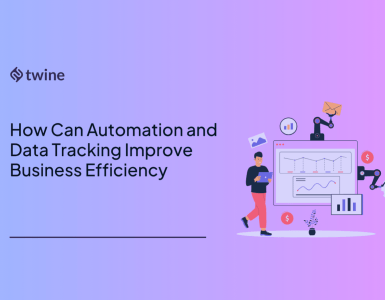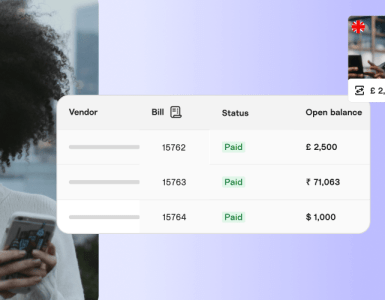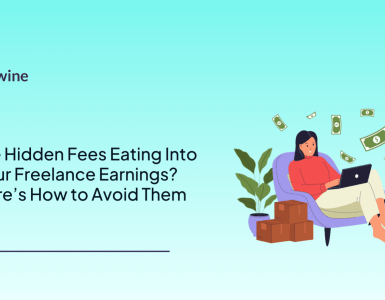If you’re a student of graphic design, whether, by formal education or independent study, you’ve probably heard of Paul Rand.
He ranks among the most influential graphic designers of the 20th century, and he’s the artist behind some of the most iconic corporate logos; the likes of which include IBM, Westinghouse (you know, that W with the dots), UPS and the ABC television network.
That’s a mere fraction. His scope of work is broad—magazine covers and page layouts, posters, and writings on the craft.
But did you know some of his most acclaimed work was done while working entry-level type jobs as a freelancer?
Freelancer—the word alone conjures a sense of autonomy. You’re free to do the work you want, free to work when you want. And freedom feeds the creative soul.
If you’re thinking about making that leap, consider this a tip sheet.
Here, we outline the types of jobs to seek out first and follow that list with other useful information, including deets on few resources that will come in handy as you build your freelance career—Twine and the Chronos time tracking app among them. But we’ll get to those later.
Let’s start with the burning question:
What kind of design jobs can a newbie freelancer expect to land?
The below list of entry-level graphic design jobs ranges from the most basic to the more complex, and you’ll find a few brief notes on each—not so much on explaining what the jobs are or how to do them (as a graphic designer, you probably already know all that) but, rather, on why they’re worth going after first.
It’s by no means a complete list of all the various types of jobs you can land as a seasoned freelancer. But it’s a good starting point.
“Not everything is design. But design is about everything. So do yourself a favor: Be ready for anything.” – Michael Bierut, graphic designer, design critic, educator and author.
The Jobs
Stationery & Letterhead
Whether you’re just starting out in your career, or you’re a seasoned designer, these are quick and easy projects that will allow you to get the job done, get paid and move on to the next project—hopefully, all while establishing lasting relationships that will yield returning business.
Think of these assignments as your bread and butter because they’re going to be pretty easy to churn out.
Logo Design
These are great gigs because they require you to really think creatively, and they’ll add to your portfolio in a meaningful way.
They’re also important because they establish a client’s brand identity—and can continue to do that for a very long time. (Just think about the longevity of the aforementioned IBM logo.)
If you’re good at it, you might just be able to fetch a handsome fee. It’s been said that Enron energy corporation paid Rand $33,000 to design its logo—although that was in the 1990s after he’d already established a reputation as a leader in the field. (One can dream, right?)
Business Documents
Not necessarily demanding much creativity other than drafting charts and illustrations, and perhaps utilizing some stock photography, these jobs are pretty straightforward and could pave the path for return business.
The work can be tedious and voluminous in terms of content, but that could swing the fee for producing the job in your favour.
Signage, Posters, Postcards & Flyers
Oh, the fun, creative possibilities that come with these jobs. You can play around with typography, colour and artwork—and it’s a chance to really think outside of the box.
Think of Bob Dylan’s psychedelic-hair poster from 1967 designed by Milton Glaser and Rand’s illustrated eye, bee and M (get it?) poster from 1981.
They’re also pretty popular and easy to land, making them a perfect entry point to the career. Whether they wind up being one-off jobs or lead to lasting relationships with the client is hard to predict, however.
Brochures & Advertising Materials
These might sound a bit boring, but don’t sell them short.
The challenge (in a good way) is to cast the brand’s identity and messaging in a way that inspires a call to action from the public or the client’s target audience.
The material needs to be alluring enough to attract attention—captivating enough to entice someone to pick up the brochure or stop and read the ad. And that adds value to the work.
Digital Media Campaigns & Websites
The trick for these is to really know your client.
You’ll want to incorporate its brand identity into the platform with colour, typography and the overall vibe. In terms of time commitment, these jobs could go either way, depending on the size of the company, the number of people involved, the complexity of the page or site, and your level of comfort in this medium.
If you’re just starting out, you’ll want to carefully weigh the pros and cons before taking on projects like these.
“There are three responses to a piece of design–yes, no and WOW! Wow is the one to aim for.” – Milton Glaser, who created the I [heart] New York and DC Comics logos.
Also, Keep in Mind…
The Money
How much you can expect to be paid for these jobs really depends on your level of experience.
If you’re just starting out, and you’re still building your portfolio, don’t expect to be paid the same as a seasoned designer whose website showcases a broad spectrum of fabulous work. Where you’re located and the size of the company that’s considering hiring you for a project are other factors to consider when setting your price.
If you’re signed up with Twine, however, you’ll find jobs that offer negotiable fees as well as set rates, which takes much of the guessing out of the game.
Your Portfolio, Branding & Website
Be thoughtful as you build these assets—don’t feel like you have to put all of your work on display.
It’s better to shine the spotlight on a few truly superb projects than mix them up with work that’s just kind of, you know, meh.
If you’re super-good in one particular area—infographics, for example—you might consider focusing more on that area of expertise. On the flip side, if you’re confident in your ability to create all kinds of projects, then organize your portfolio by genre. Either way, be selective.
Your Scope of Work
It’s never a good idea to place all your eggs in one basket.
The best scenario is to have a few regular clients, then continue to seek out new business and a variety of projects. It makes for a more interesting working world for you and helps ensure there’s always money coming in.
Slow times are inevitable, though. So use that time wisely—volunteer to work on graphic designs for a nonprofit in your area or create your own line of greeting cards, stationery or posters. Love photography? Snap away! The important thing is to keep flexing those creative muscles.
Your Network
Get social. Share your work—and often.
Connect with other designers—they might refer jobs that they’re unable to tackle. Networking is essential, so make time for it. Consider joining American Institute of Graphic Arts—you can benefit from the knowledge and experience of other designers, and stay current with new trends in the design field.
That aforementioned pro bono work is another great way to network. It could make inroads for connecting with key players in your area’s business community, which could land new accounts.
…And Some Essential Resources
Adobe Creative Cloud
This is an absolutely essential suite of software for graphic designers that includes Photoshop, Illustrator, InDesign and InCopy, as well as programs for audio and video projects such as Premiere Pro, After Effects and Audition.
Envato Elements
A plethora of assets are at your fingertips here—everything from stock videos, images and sound effects to graphics, templates and fonts. The subscription service offers unlimited downloads of more than 50 million creative materials.
Chronos Time Tracking
Time is money, which makes this an important tool for any freelancer.
It offers two tiers of assistance—the free application tracks time, expenses and payments, and maintains a historical record; the Pro package, which costs $9 a month, does all of that, in addition to profit and loss reporting, accounts receivable tracking, and smart job estimates to help you price projects effectively.
So, now you’re armed with information to set you on your path to a career as a freelance graphic designer! As you begin this creative venture, keep in mind this nugget of truth from German graphic designer Otl Aicher:
“Good art inspires; Good design motivates.”
Looking to find paid work as a freelance graphic designer? Sign up to Twine and pitch on a wide range of high-ticket graphic design jobs.
Once you’ve secured a client, streamline the revision process with ReviewStudio; the ultimate proofing application that allows you to track revisions and provide detailed feedback alongside each draft.






